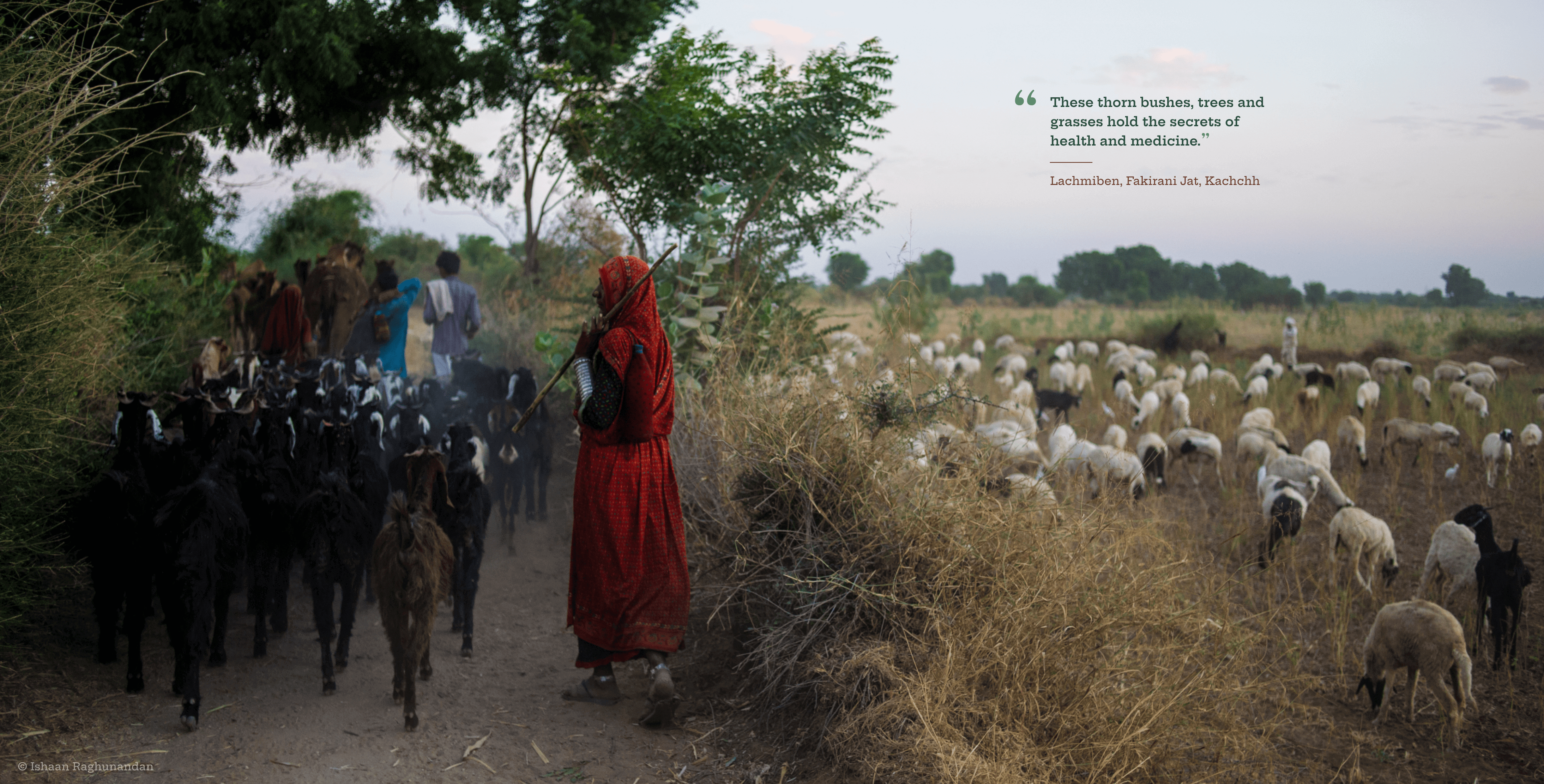

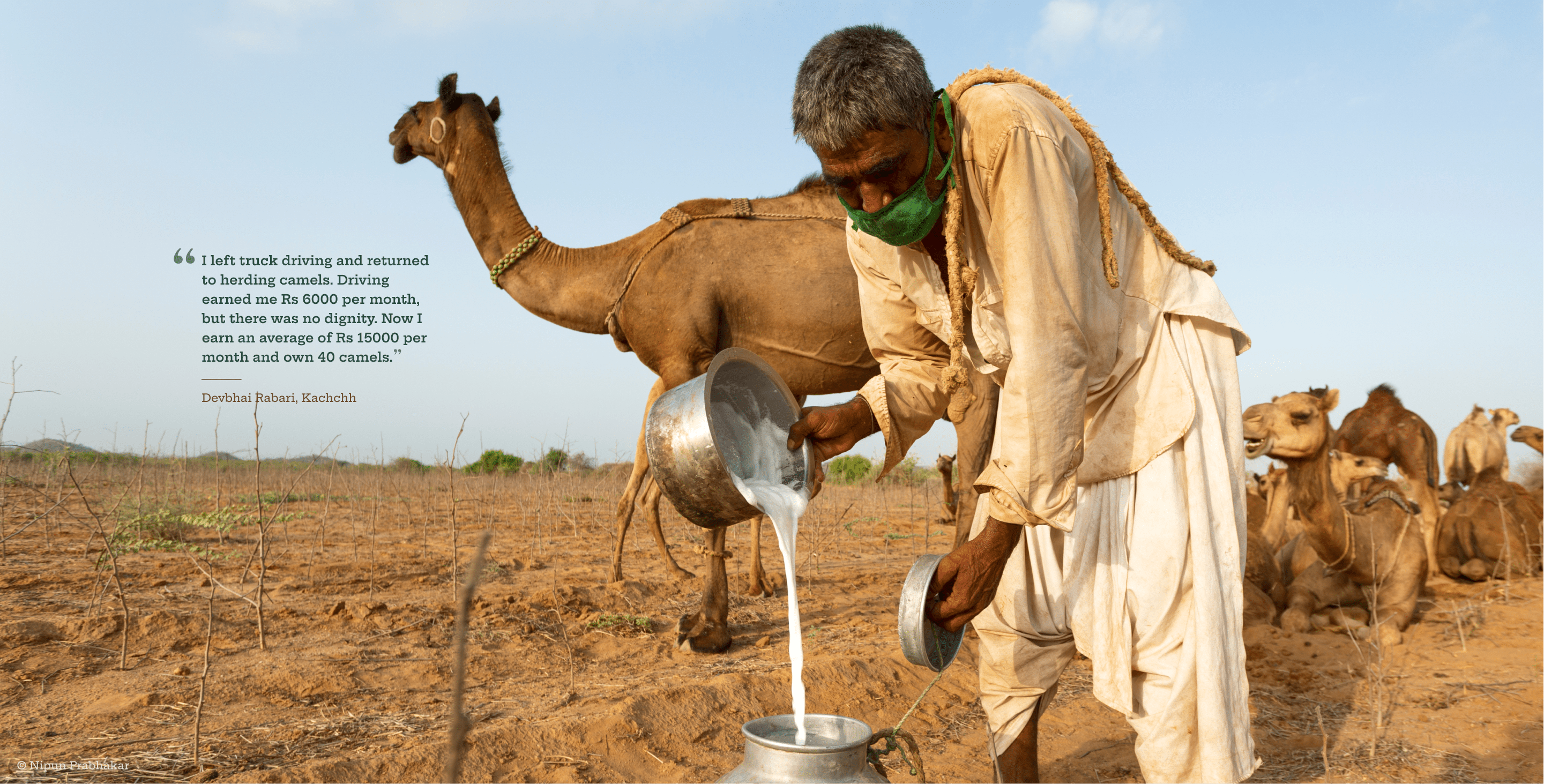
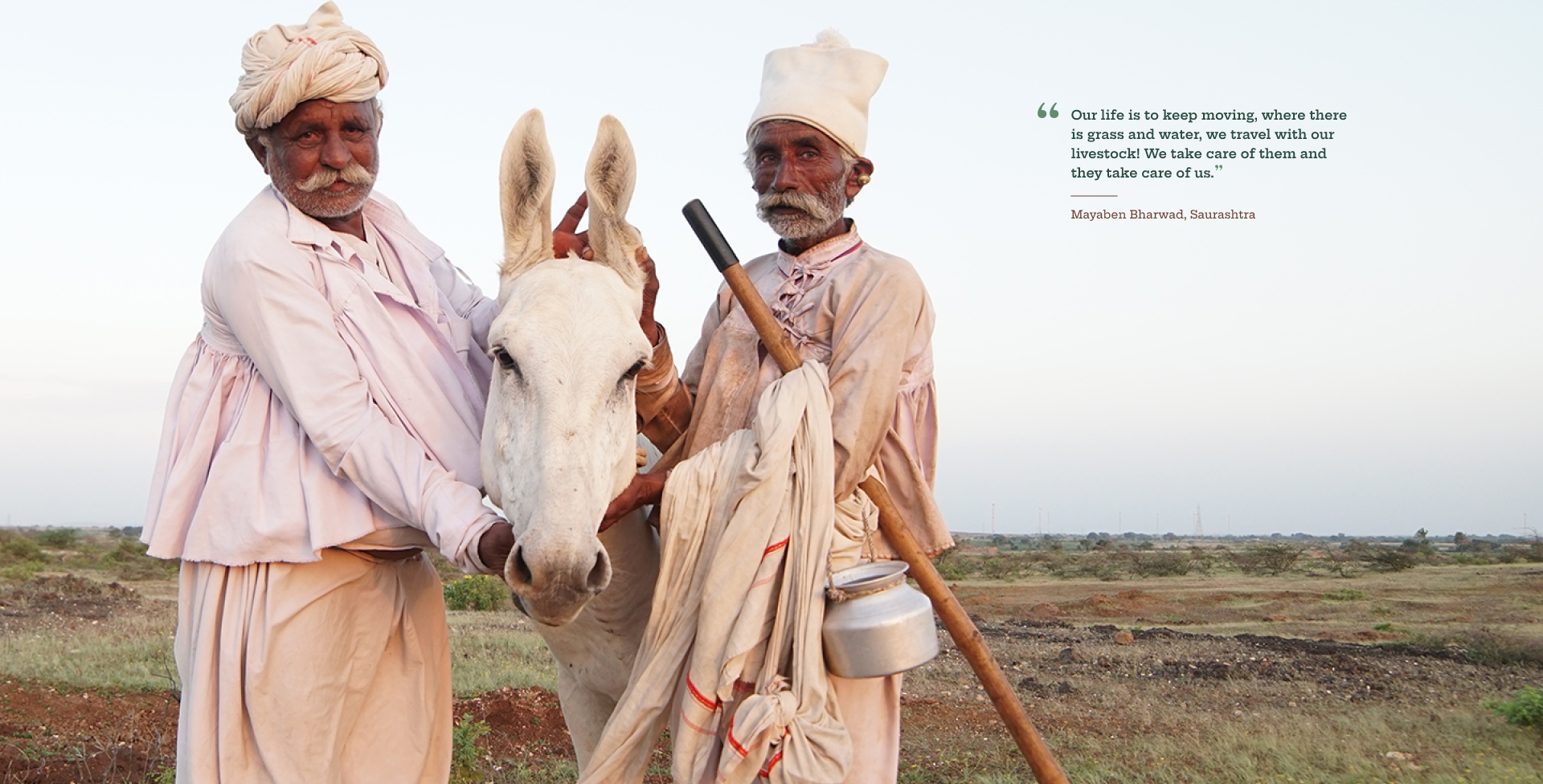
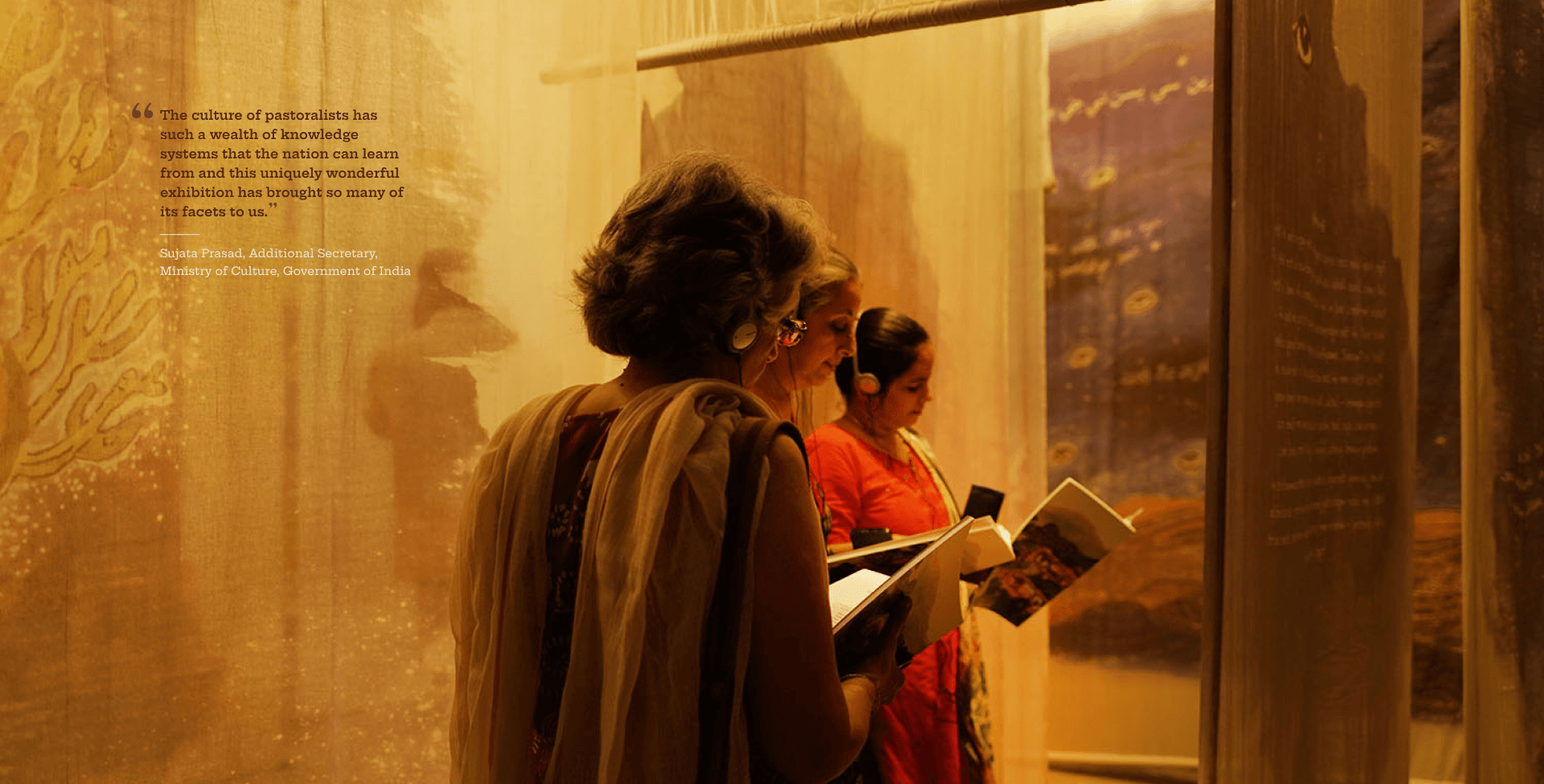
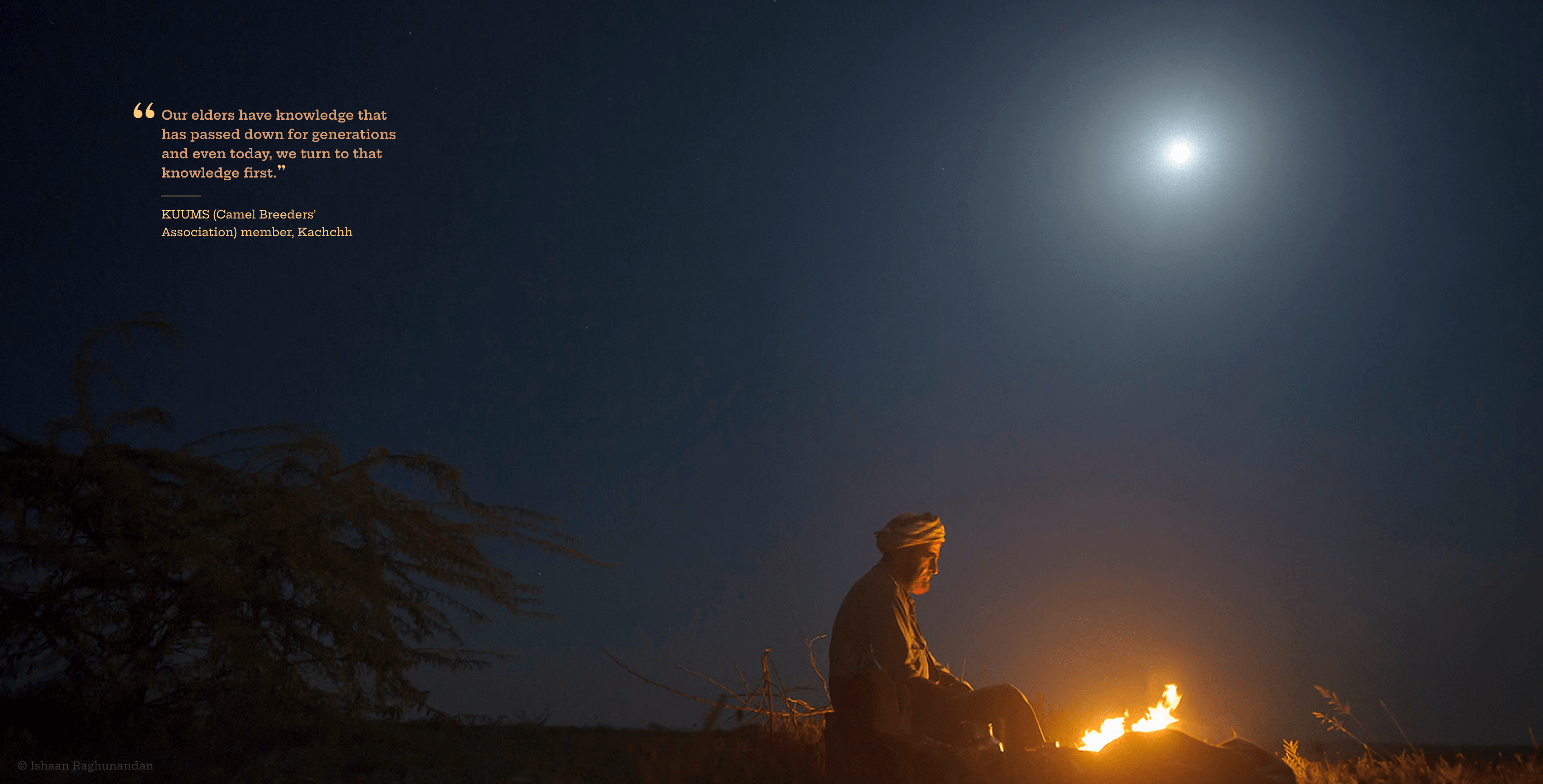
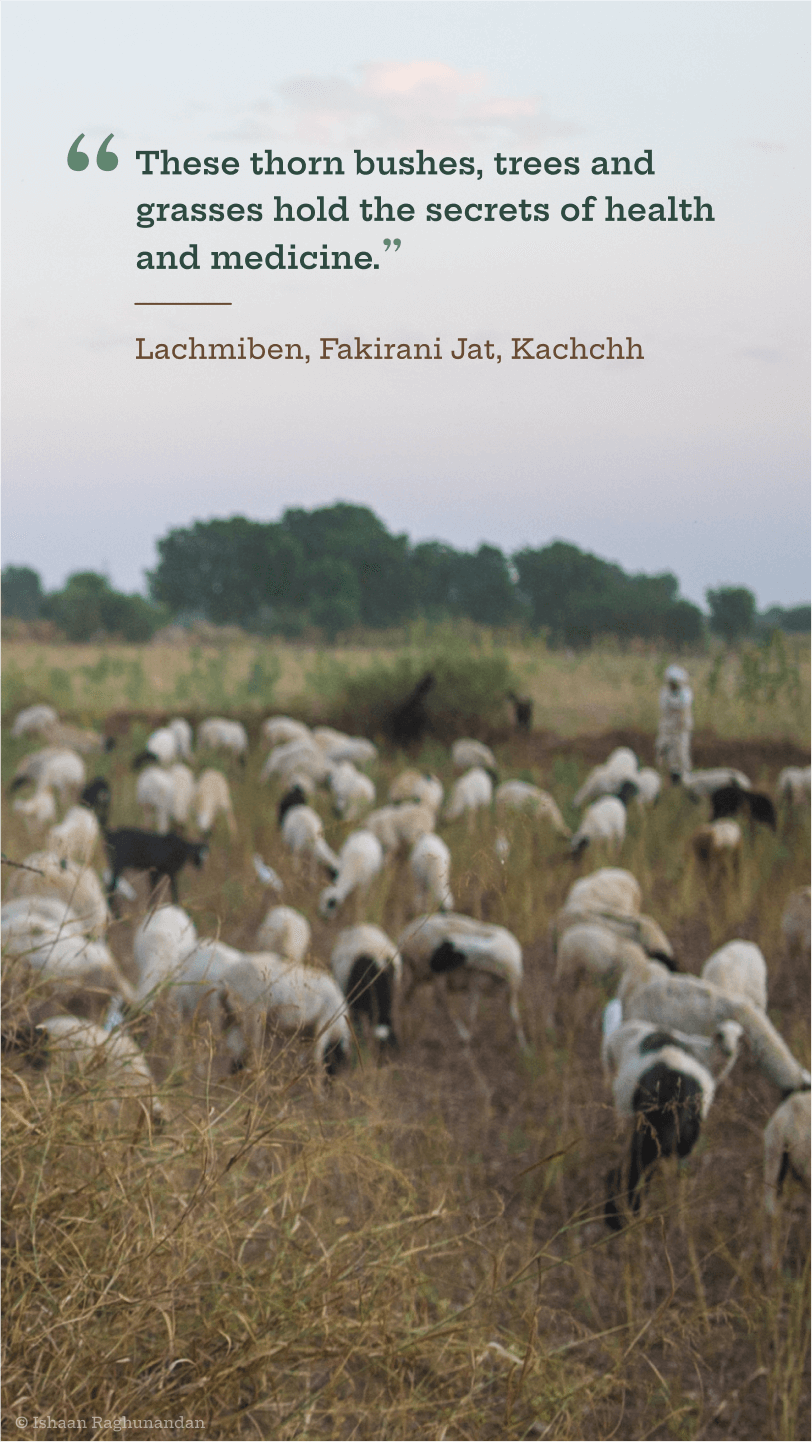
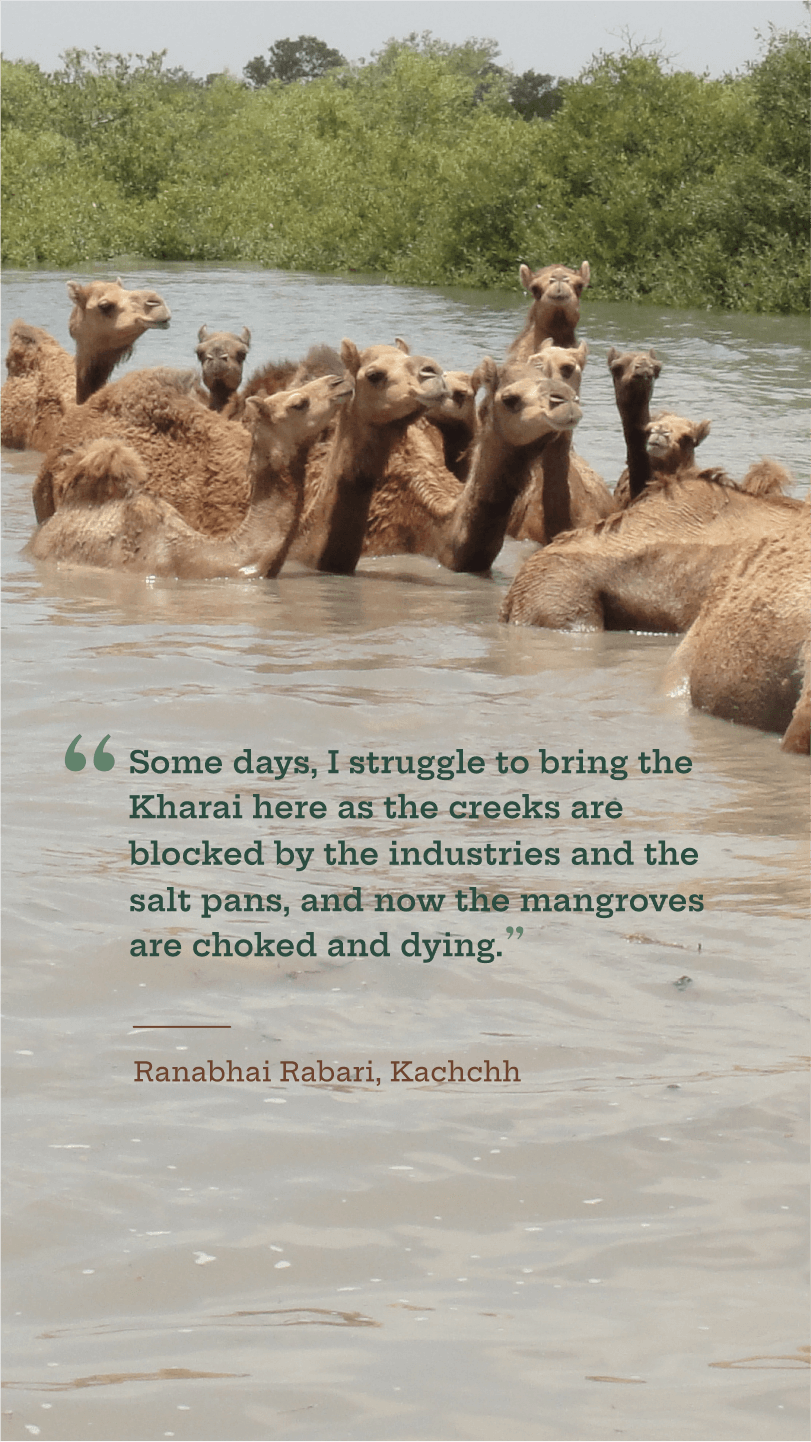
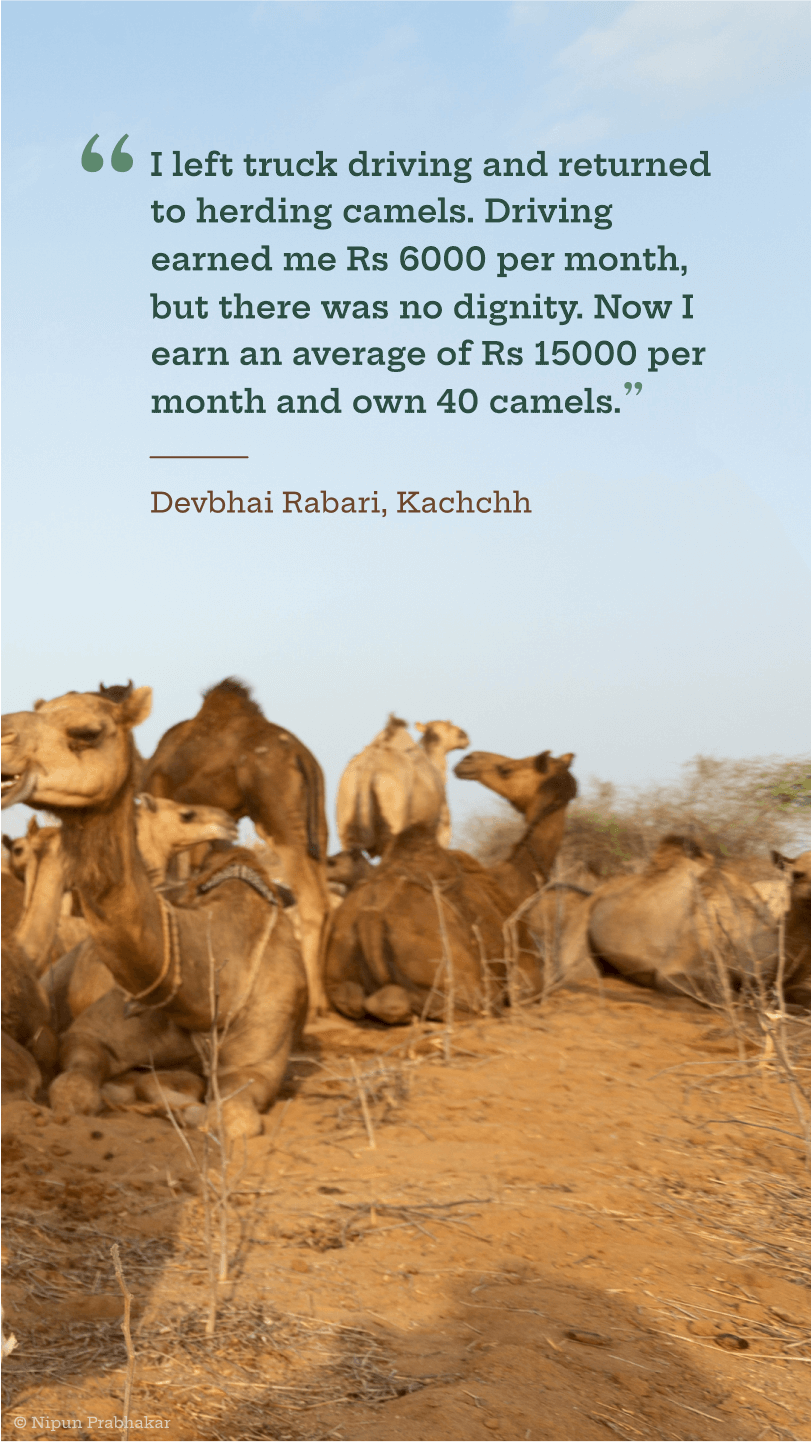
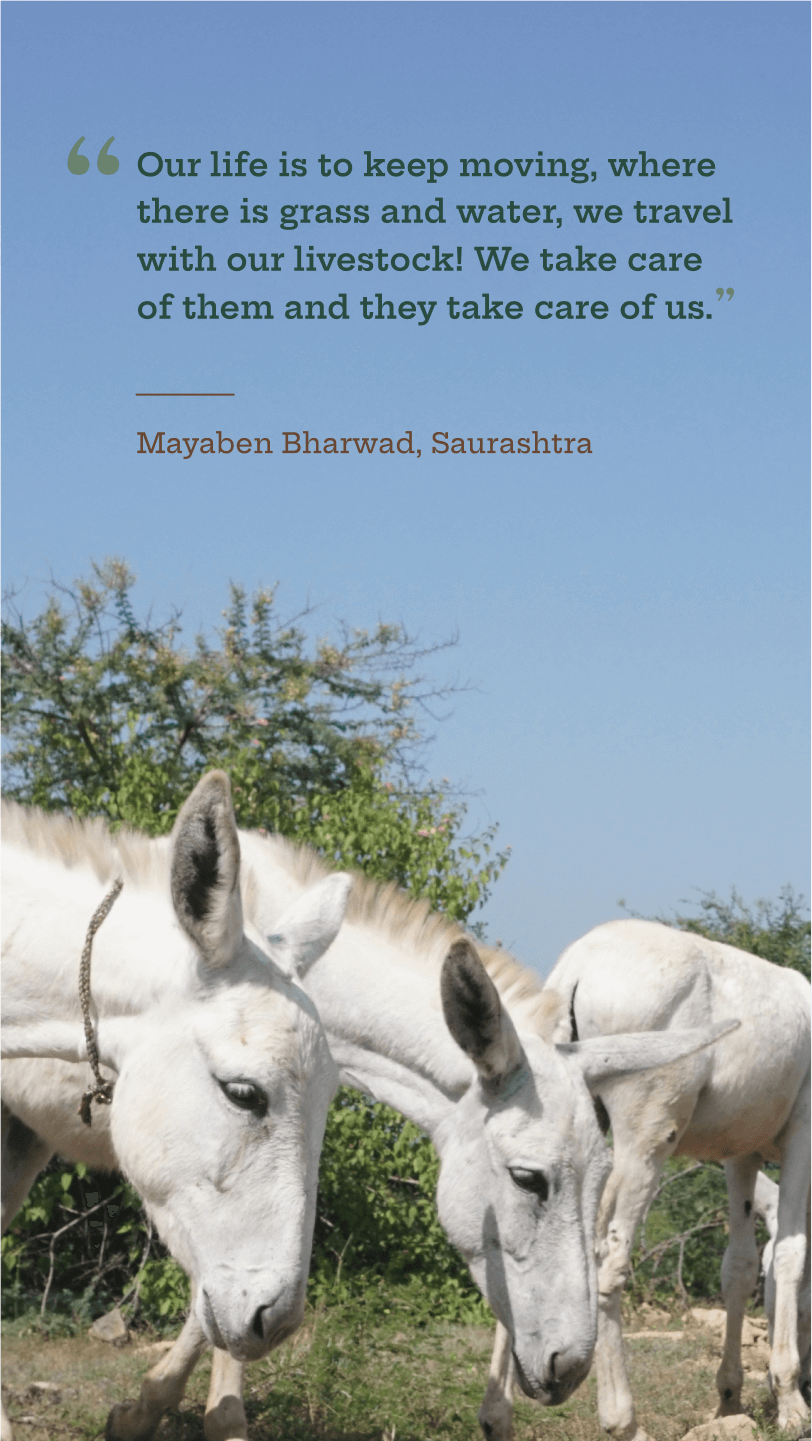
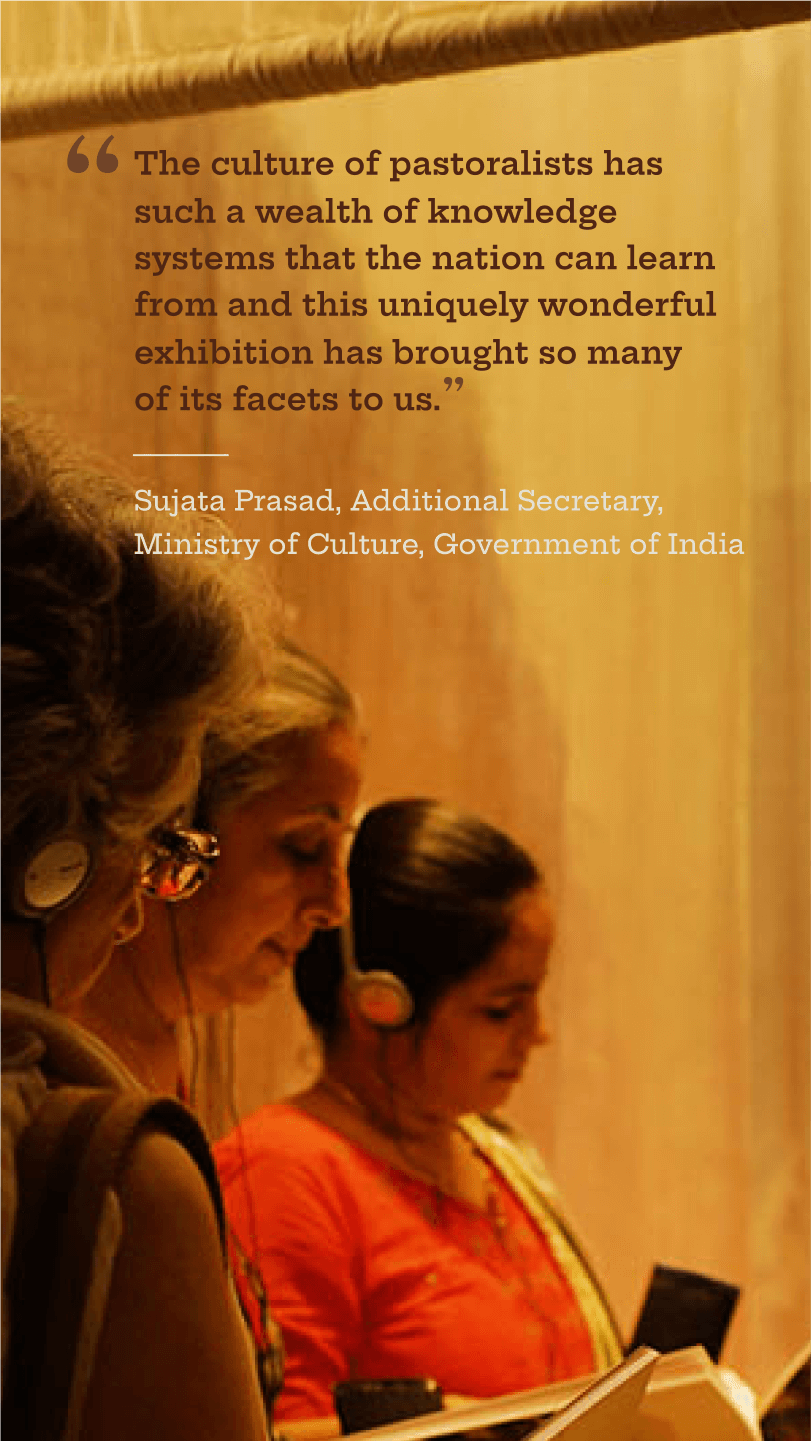
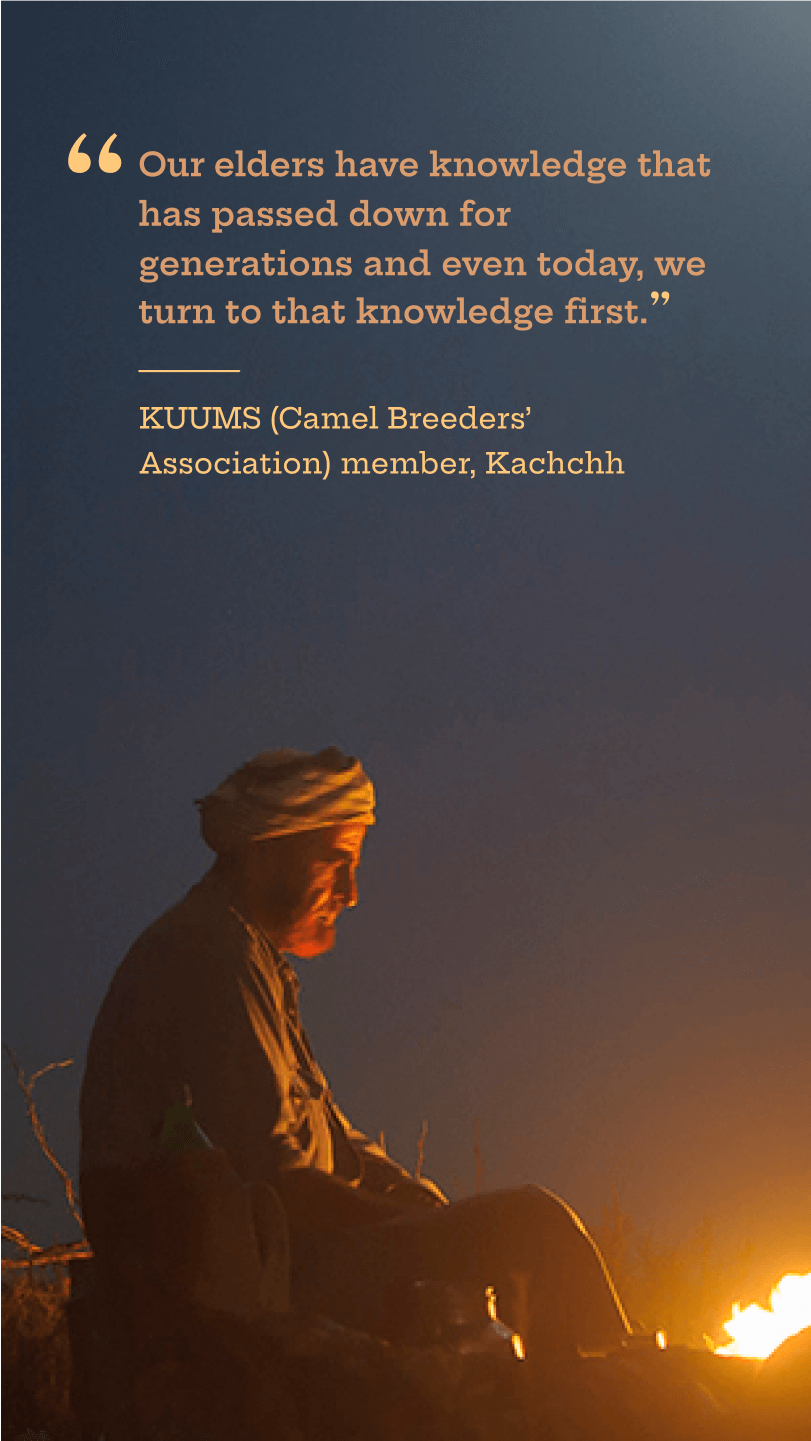




Map
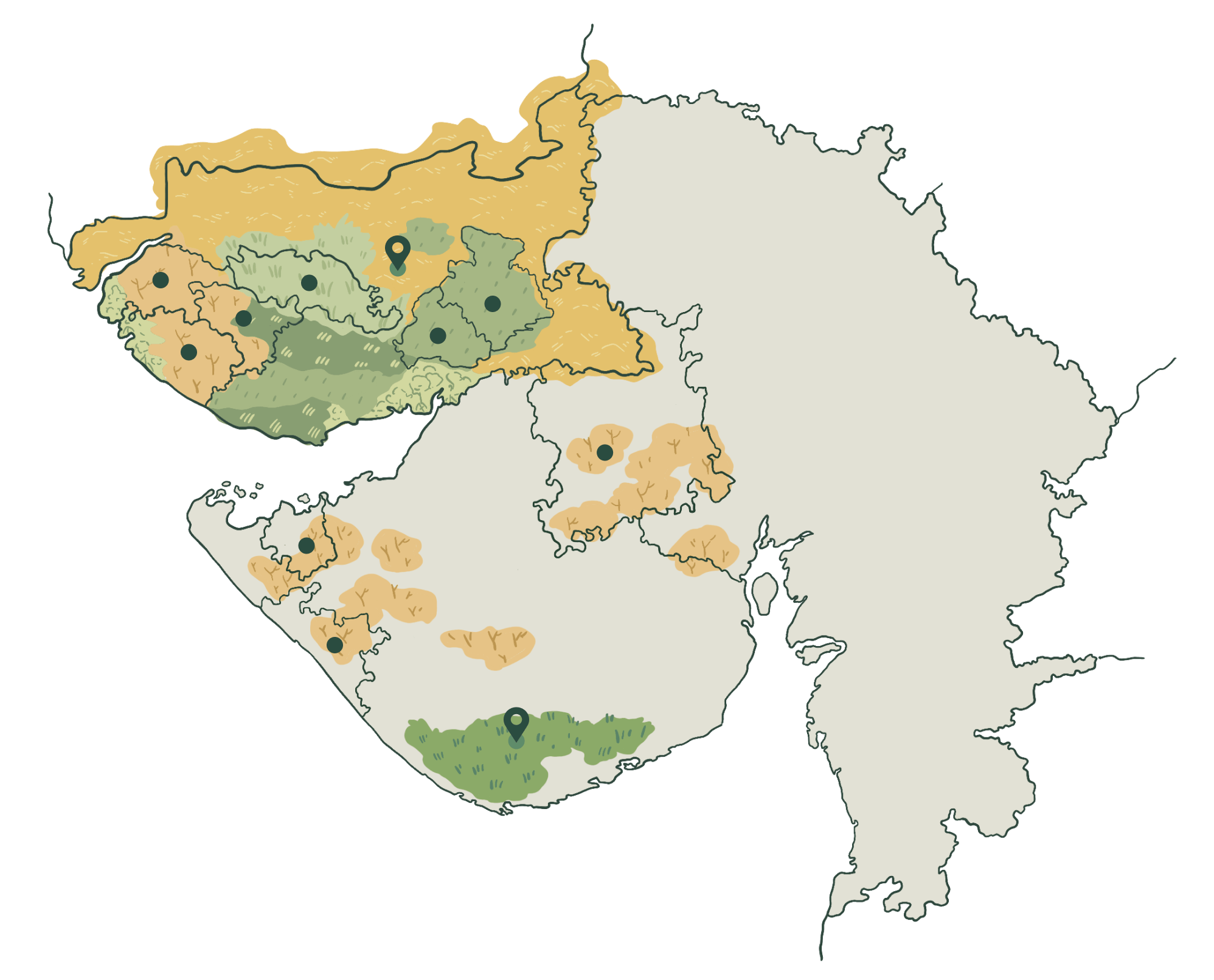
Abdasa

Abdasa block has rich grasslands with patches of mangroves. Goat, sheep, and kharai camels of the region are dependent on the same. Here, Sahjeevan has enabled communities to form a Sheep Goat Breeder Association, i.e. Ghenta Bakra Maldhari Sangathan and are now exploring pastoral based livelihood opportunities. The works include strengthening of Sangathan, health improvement of the breed, access to grazing resources through Forest Rights Act and creating pastoral based livelihood avenues.
Surendranagar

In the Surendranagar district, the focus is on developing a goat milk value chain with the Sursagar Dairy, developing community-based institutions and youth entrepreneurship.
Khambaliya

Khambaliya is a relatively new cluster built to focus on the Marine National Park and the pastoralists who are dependent on its resources. The major interventions planned in the villages are veterinary health, conservation of the Kharai Camel, livelihood linkages and access to the Marine National Park through the Forest Rights Act for the sustenance of pastoral communities.
Porbandar

In the Porbandar district cluster, Sahjeevan concentrates on the Forest Rights Act implementation.
Lakhpat

Lakhpat is endowed with a rich tropical thorn forest and is famous for the Narayan Wildlife Sanctuary and various reserve forests. The block also has dense mangrove forests and high coastal biodiversity. Under pastoralism, goats, sheep and Kharai Camels dominate this region. Sahjeevan is exploring ways to empower communities by linking pastoral products like sheep wool and goat milk to the market. The work is undertaken in partnership with GBMS and KUUMS.
Nakhatrana

Nakhatrana is predominantly a thorn-scrub forest which supports a large number of biodiversity and different pastoral animals like sheep, goats and camels. Sahjeevan works in partnership with KUUMS (Kutch Unt Uchherak Maldhari Sangathan) and activates the capacities of community-based organisations and cooperatives, and facilitates linkages to the market to support KUUMS Milk Cooperatives. Sahjeevan’s work on mobilising people to further the work on sheep and goat pastoralism is underway in Nakhatrana. We are also facilitating the processes related to the Forest Rights Act with the pastoral communities here.
Banni (Bhuj)

Banni, spanning over 2497 sq. km in the northern part of Kachchh, is a large savannah-type grassland dotted with seasonal wetlands, scrub forest and saline-mix highly nutritive grass species. In Banni, Sahjeevan works directly with its partner BPUMS (Banni Pashu Uchherak Maldhari Sangathan) to empower communities, generate livelihoods and conserve biodiversity. The organisation initiated its work on the Forest Rights Act with the communities in Banni in 2012.
Bhachau

Fakirani Jats of Bhachau herd Kharai Camels and they are dependent on the mangrove forest of the block for more than eight months a year. The region also has a small scrub forest. Sahjeevan and KUUMS are working towards the conservation of the mangrove forests, health support for Kharai Camels and exploring alternatives to camel milk.
Rapar

Rapar has a thorn-scrub forest as well as a desert ecosystem since it borders the Little Rann of Kachchh, a part of the Great Rann widely known for its magnificent Wild Donkey, xerophytic vegetation and islands/bets which harbours a great diversity of migratory birds. Rapar has Jat communities who keep Kachchhi Camels and Rabaris who keep camels, goats and sheep. Sahjeevan works in Rapar on livelihood, health and grazing issues, with the goat and sheep (Rabari) pastoralists, on wool and goat milk initiatives. Sahjeevan is extending its KUUMS association and agendas of livelihood, institution-building and ecological conservation in this region.
Saurashtra

Sahjeevan has been working in three clusters, Upleta, Surendranagar and Khambaliya. The Upleta cluster covers Rajkot (Upleta and Dhoraji Block), Jamnagar’s Jamjodhpur, Kalyanpur, Lalpur and Kalavad blocks. The interventions focus on goat milk livelihoods, the building of community-based institutions and breed conservation along with migratory Halari Donkey breeders.
Kachchh

Sahjeevan’s work on pastoralism is currently active in six blocks — namely Bhuj, Nakhatrana, Rapar, Bhachau, Abdasa, and Lakhpat — of Kachchh under various biodiverse ecosystems.
Add Your Heading Text Here
-
 BANNI GRASSLAND
BANNI GRASSLAND -
 DENSE GRASSLAND
DENSE GRASSLAND -
 THORN-SCRUB FOREST
THORN-SCRUB FOREST -
 MANGROVES
MANGROVES -
 RAIN-FED AGRICULTURE
RAIN-FED AGRICULTURE -
 IRRIGATED AGRICULTURE
IRRIGATED AGRICULTURE
